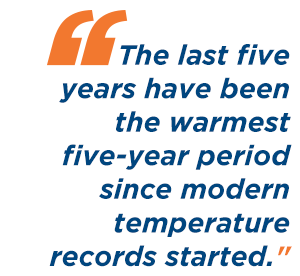 Today we feature a conversation with green builder John Hill. He’s a graduate of Appalachian State University, a leading school for sustainability education and home to the longest running sustainable development program in the nation.
Today we feature a conversation with green builder John Hill. He’s a graduate of Appalachian State University, a leading school for sustainability education and home to the longest running sustainable development program in the nation.
Q: Have you always been passionate about protecting the environment?
A: I’ve been interested in renewable energy technology since high school. So when I was ready to attend college, I researched universities and found Appalachian State. They had been teaching appropriate technology for a couple of decades and their list of courses looked super interesting. I worked my way through all of the course work and then some, eventually earning a degree.
 I really enjoyed the renewable energy courses as I thought I would, but ended up being more passionate about energy efficiency. The building science and sustainability courses forced me to consider the bigger picture of our energy use and consumption, as well as its generation. It was an eye opener to see how many systems and details need to work together to make the most durable, comfortable, and efficient buildings possible. As it turns out, our built environment uses a tremendous amount of the energy we produce. Also generating power is one of the largest impacts we have on planet earth and therefore on all of its present and future inhabitants. Which means building smarter, smaller, and more durable buildings can make a real impact. Low hanging fruit really.
I really enjoyed the renewable energy courses as I thought I would, but ended up being more passionate about energy efficiency. The building science and sustainability courses forced me to consider the bigger picture of our energy use and consumption, as well as its generation. It was an eye opener to see how many systems and details need to work together to make the most durable, comfortable, and efficient buildings possible. As it turns out, our built environment uses a tremendous amount of the energy we produce. Also generating power is one of the largest impacts we have on planet earth and therefore on all of its present and future inhabitants. Which means building smarter, smaller, and more durable buildings can make a real impact. Low hanging fruit really.
Q: How did you get involved in the green building industry?
A: Once my wife and I settled into Boone, North Carolina (where Appalachian State is located), we realized that rent costs were pretty darn high. We decided to build a house while we were there, thinking we could use some of the strategies and technology that I was learning in school. The building business was booming in the area at that time and I couldn’t find a contractor interested in taking on a small alternative home, so I entered the building industry out of necessity. My wife and I, along with friends and occasionally a hired builder, eventually finished the project. We ended up with a great little house and a great big education. I later went to work for one of the builders that had helped with the project and I’ve been working in the field since.
Q: What were some of the special features of your first green house?
A: Our main design goal was to create a low-impact home that would appeal to people because of its functionality and comfort – not just that it didn’t cost a lot to power. We spent a ton of time designing out wasted space, and figuring out how to get multiple uses out of certain areas so that we could keep the footprint small. That was the hardest part. We used high ceilings, plenty of daylighting, and an open floor plan to help the space feel big. We designed one bedroom to open up to the great room so we could expand the living space for entertaining.
 Fortunately, almost everything you do to make a house more efficient also makes it more comfortable. For instance, by using heat recovery in the ventilation system, you not only save on heating and cooling energy – the fresh air that supplies the house is a more comfortable temperature. By orienting the house to the sun and using passive solar strategies, you can capture solar energy during the winter while avoiding overheating in the summer. That’s a win-win for year-round comfort. Of course, we made the shell of the house super resistant to heat and air transfer and chose efficient appliances, all of which increases performance and lowers energy use. Our solar water heating system was significantly more complex and expensive to install than a traditional water heater, but month after month, it used free solar energy to do most of the water heating, offsetting around a quarter of the house’s energy needs. The payback for that effort is more than financial – it just feels good to take a shower and know the water was warmed by the sun, not a power plant or oil well. In the end, the home we built operated on less than half of the energy of a typical new home in that region and we made plenty of mistakes on our first try.
Fortunately, almost everything you do to make a house more efficient also makes it more comfortable. For instance, by using heat recovery in the ventilation system, you not only save on heating and cooling energy – the fresh air that supplies the house is a more comfortable temperature. By orienting the house to the sun and using passive solar strategies, you can capture solar energy during the winter while avoiding overheating in the summer. That’s a win-win for year-round comfort. Of course, we made the shell of the house super resistant to heat and air transfer and chose efficient appliances, all of which increases performance and lowers energy use. Our solar water heating system was significantly more complex and expensive to install than a traditional water heater, but month after month, it used free solar energy to do most of the water heating, offsetting around a quarter of the house’s energy needs. The payback for that effort is more than financial – it just feels good to take a shower and know the water was warmed by the sun, not a power plant or oil well. In the end, the home we built operated on less than half of the energy of a typical new home in that region and we made plenty of mistakes on our first try.
Q: What’s new in the green building industry that’s exciting to you?
A: I really like the tiny house movement for exposing us to how much downsizing is possible while maintaining or probably improving one’s lifestyle. I also dig electric drive vehicles, especially bikes. I think plenty of us could trade a 5000-pound auto for a 50-pound electric bike and have a hell of a lot more fun getting around, using a fraction of the energy.
Q: What are your top energy saving tips?
A: Localize or regionalize your diet. Live near where your main activities are in the smallest residence imaginable – and think hard about this one! Turning off electronics that you’re not using is helpful, too.
Q: How do you envision our world in 50 years?
A: We should all be living in buildings that produce more energy than they use and zipping around in lightweight electric vehicles powered with renewable sources. Maybe by then we will no longer be harming our planet, but sustaining it and repairing it – leaving it cleaner and more resilient for future residents.
 Both economically and environmentally, the technology makes sense and can be replicated worldwide. Blake Boxley, Director of Environmental Health and Safety, Smithfield Hog Production, explains, “This project will show how farmers can do more than produce food. We can make energy, we can reduce waste, and we can be good stewards for our most important resources – land and water.”
Both economically and environmentally, the technology makes sense and can be replicated worldwide. Blake Boxley, Director of Environmental Health and Safety, Smithfield Hog Production, explains, “This project will show how farmers can do more than produce food. We can make energy, we can reduce waste, and we can be good stewards for our most important resources – land and water.” Yes, there is such a thing. Eighty-eight of them, in fact, at Smithfield Foods’ hog farms. Phase one of the $120 million project began back in 2014 by creating covers for these manure lagoons. The covers keep methane gas from escaping into the atmosphere, keep the rain out, and as you can imagine, greatly improve the way the air smells! Phase two is underway which involves technology that purifies the methane gas and then connects it to the natural gas pipeline. The project is on schedule to be completed this summer.
Yes, there is such a thing. Eighty-eight of them, in fact, at Smithfield Foods’ hog farms. Phase one of the $120 million project began back in 2014 by creating covers for these manure lagoons. The covers keep methane gas from escaping into the atmosphere, keep the rain out, and as you can imagine, greatly improve the way the air smells! Phase two is underway which involves technology that purifies the methane gas and then connects it to the natural gas pipeline. The project is on schedule to be completed this summer. Turning manure into energy isn’t the only transformation Roeslein Alternate Energy has in store for the Midwest. Future plans involve restoring prairie grasslands to produce prairie grass biomass that will also be converted into energy along with the manure. The prairie grass addition will double the project’s energy production and fund the transformation of marginal land into stretches of beautiful prairies filled with native wildlife.
Turning manure into energy isn’t the only transformation Roeslein Alternate Energy has in store for the Midwest. Future plans involve restoring prairie grasslands to produce prairie grass biomass that will also be converted into energy along with the manure. The prairie grass addition will double the project’s energy production and fund the transformation of marginal land into stretches of beautiful prairies filled with native wildlife.

 Today we feature
Today we feature  A: Like many children, I liked animals. I was born in Kenya and so the natural environment and wildlife were very vivid. As I grew older, I realized the importance of clean air and water, both of which are vital to public health and a good quality of life. As the huge amounts of heat trapping gas goes into the atmosphere and changes the world’s climate, my concern for environmental issues continues to grow. Indeed, the last five years have been the warmest five-year period since modern temperature records started; 2014 was the warmest year; and now 2015 will smash the warmest year record again. The heat is on and increasing.
A: Like many children, I liked animals. I was born in Kenya and so the natural environment and wildlife were very vivid. As I grew older, I realized the importance of clean air and water, both of which are vital to public health and a good quality of life. As the huge amounts of heat trapping gas goes into the atmosphere and changes the world’s climate, my concern for environmental issues continues to grow. Indeed, the last five years have been the warmest five-year period since modern temperature records started; 2014 was the warmest year; and now 2015 will smash the warmest year record again. The heat is on and increasing. Today we feature a conversation with green builder John Hill. He’s a graduate of
Today we feature a conversation with green builder John Hill. He’s a graduate of  I really enjoyed the renewable energy courses as I thought I would, but ended up being more passionate about energy efficiency. The building science and sustainability courses forced me to consider the bigger picture of our energy use and consumption, as well as its generation. It was an eye opener to see how many systems and details need to work together to make the most durable, comfortable, and efficient buildings possible. As it turns out, our built environment uses a tremendous amount of the energy we produce. Also generating power is one of the largest impacts we have on planet earth and therefore on all of its present and future inhabitants. Which means building smarter, smaller, and more durable buildings can make a real impact. Low hanging fruit really.
I really enjoyed the renewable energy courses as I thought I would, but ended up being more passionate about energy efficiency. The building science and sustainability courses forced me to consider the bigger picture of our energy use and consumption, as well as its generation. It was an eye opener to see how many systems and details need to work together to make the most durable, comfortable, and efficient buildings possible. As it turns out, our built environment uses a tremendous amount of the energy we produce. Also generating power is one of the largest impacts we have on planet earth and therefore on all of its present and future inhabitants. Which means building smarter, smaller, and more durable buildings can make a real impact. Low hanging fruit really. Fortunately, almost everything you do to make a house more efficient also makes it more comfortable. For instance, by using
Fortunately, almost everything you do to make a house more efficient also makes it more comfortable. For instance, by using